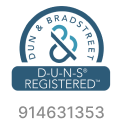As a creator and developer of e-learning, my goal is to create content that engages students and achieves defined learning objectives. But, does this gap not occur due to accessibility or usability problems? In this article, we will explain what is accessibility and usability and how to apply these principles to design courses that work best for all students. Also, you will find instructions to review and test your courses, ensuring that they serve these parents. Let's get started!
About accessibility
Accessibility is the practice of ensuring that experiences are accessible to everyone, regardless of their abilities. In the context of e-learning, this means that the content was intended to be accessed by all students, including those with hearing, visual, mobility, cognitive or other deficiencies. For example, using a suitable contrast color helps those with low vision or colorful vision deficiency. Offer textual explanations for visual content and other common accessibility practices.
Focusing on digital accessibility allows everyone to perceive, navigate and interact with the content. Diretrizes as Web Content Accessibility Guidelines (WCAG) and read as Section 508 (United States) provides guidance to ensure that all students can access materials online.
About usability
Usability in e-learning means how easy it is to use and content and value as users and experiments. The content must be intuitive, efficient and effective. For example, if students need to complete a questionnaire, they must be able to test their knowledge without finding confusing errors or becoming frustrated with the process.
The Nielsen Norman Group, specialized in improving the experience of using technologies, defined five main components of usability, which can also be applied to creating e-learning courses:
- Ease of learning: Students should be able to perform basic tasks with ease, even the first time they interact with the course.
- Efficiency: Barriers that prevent students from completing courses efficiently must be removed.
- Memorability: Some people who revisit the content must not start from zero.
- Errors: The errors found, and recovery of them, do not need to be interrupted or learned.
- Satisfaction: Engajar-se as the content should be a pleasant and satisfying experience.
Benefits of when combined
Conteúdos acessíveis melhoram experiência de todos. For example, legends and transcriptions do not only help those who are sad or have hearing impairments, but are also useful for those who are in noisy or quiet environments. In addition, we help students of foreign languages understand better and better content.
However, following accessibility guidelines, such as offering legends and transcriptions, does not automatically guarantee an efficient learning experience for all. Likewise, the contents you use are not necessarily necessary for people with disabilities. For example, a visually appealing course may be engaging for some, but if cores and other visuals are used to convey information, it will be inaccessible to people with low vision or colorful vision deficiency. To ensure true equitable access, it is essential to apply accessibility and usability practices together during course development.
Testing accessibility and usability
Testing the accessibility and usability of your course is essential to ensure that it works well for all students. Let's explore a simple and practical process that you can follow to perform these tests, using accessible tools and easy-to-implement approaches.
Accessibility test
The accessibility test aims to ensure that people with different types of disabilities can access the content. You can perform this test in two ways: using automated tools and performing a manual review.
1. Automated tests
Automated tools are ideal for quickly identifying accessibility issues in their course. They function as scanners that verify the content in search of possible barriers. Here are some tools you can use:
These tools provide stories with suggestions of melodies. However, be aware that even if they are fast, they do not capture all the problems and can generate false alerts. Think of them as the first stage of the review process.
2. Manual tests
After using automated tools, it is important to do a manual check of your course to identify problems that the tools may not have detected. Here are some practical actions you can do:
- Check keyboard navigation: Try navigating the course using just the keyboard. This is essential for students who use assistive technologies. Make sure that all links, menus and buttons can be accessed without the use of the mouse.
- Alt text review: Ensures that all important images have adequate alternative text descriptions. These descriptions help students with visual impairment to understand the visual content of the course.
- Legends and transcriptions: Verify that the videos have legends and have been transcribed for audio content. This guarantees that people with hearing impairment or who are in quiet environments can accompany the content.
By completing these tests, you will have a more complete view of the accessibility of your course, ensuring that it is accessible to everyone.
Usability testing
The usability test examines the ease with which students interact with the course. Some content may be technically accessible, but if it is difficult to use, students' experience will be frustrating. Here's how to test the usability of your course effectively:
1. Tests with real users
Invite people, preferably with different profiles (including people with disabilities), to test the course. Give them simple tasks, like navigating between movies or completing a quiz, and watch them interact with the content. Face questions like:
- Was it easy to navigate the course?
- Have you ever found yourself confusing or frustrating?
- Did the visual design help or capture the experience?
Including users with deficiencies in tests is a powerful way to ensure that the course is truly inclusive and easy to use for everyone.
2. Simplicity and clarity
To review the feedback of two usability tests, verify that the course presents simple navigation, clear buttons and objective instructions. Certify that:
- Or someone can easily understand what needs to be done at each stage of the course.
- These actions seem intuitive and will not cause confusion.
- The design helps in learning, without overloading the user with unnecessary information.
By combining the accessibility and usability tests, you guarantee that your course is inclusive and offers a pleasant learning experience for all students.
If you want to know more about how to make your e-learning more accessible and effective, come with a specialist. Software.com.br via email consultoria@software.com.br Discover how Articulate can help transform your online learning experience.









 7 min reading
7 min reading




